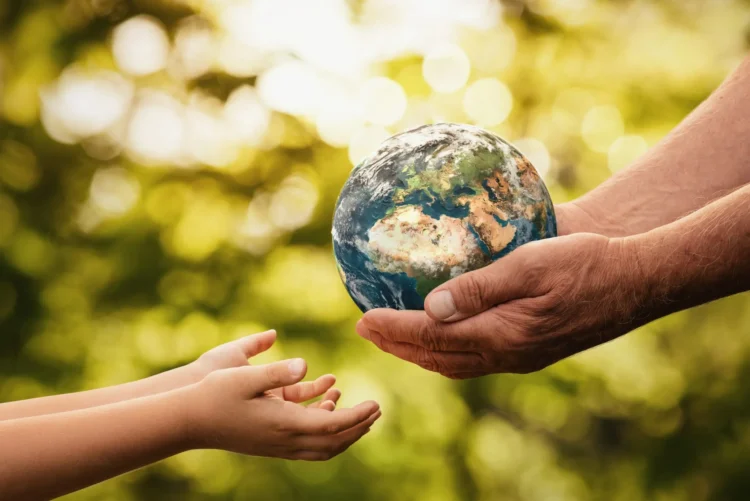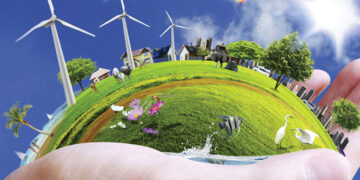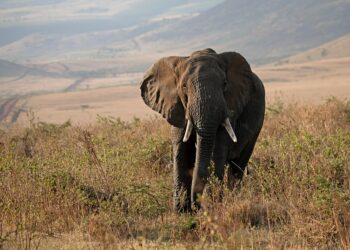[ad_1]
The Power of the Wind: Harnessing Renewable Energy for a Sustainable Future
Renewable energy sources such as wind power have gained significant attention in recent years as the world seeks to reduce its reliance on fossil fuels and combat climate change. Harnessing the power of the wind offers a sustainable and environmentally friendly alternative to traditional forms of energy production. In this article, we will explore the benefits of wind energy, how it works, and its potential to shape a more sustainable future for generations to come.
What is Wind Energy?
Wind energy is a form of renewable energy that is generated by harnessing the power of the wind to produce electricity. Wind turbines are used to capture the kinetic energy of the wind and convert it into electrical power. These turbines consist of blades that are mounted on a rotor, which is connected to a generator that produces electricity when the rotor spins. Wind energy is a clean and abundant source of power that has the potential to meet a significant portion of the world’s energy needs.
Benefits of Wind Energy
There are many benefits to using wind energy as a source of power. One of the primary advantages is that wind is a renewable resource that will never run out. Unlike fossil fuels, which are finite and contribute to climate change, wind energy is abundant and does not produce greenhouse gas emissions. Wind energy is also cost-effective, as the fuel source is free and maintenance costs are relatively low compared to traditional forms of energy production. Additionally, wind energy creates jobs and stimulates economic growth in communities where wind farms are located.
How Wind Energy Works
Wind energy works by capturing the kinetic energy of the wind and converting it into electricity. Wind turbines are strategically placed in locations where there is a consistent and strong wind flow. As the wind blows, it causes the blades of the turbine to rotate, which in turn spins the rotor connected to a generator. The generator then produces electricity, which is sent to a power grid for distribution to homes and businesses. Wind energy can be produced onshore or offshore, and large-scale wind farms are capable of generating significant amounts of power.
Challenges and Solutions
While wind energy offers many benefits, there are also challenges associated with its implementation. One of the main challenges is the intermittency of wind power, as the wind does not always blow consistently. This can lead to fluctuations in electricity production and grid instability. However, advancements in technology, such as energy storage systems and smart grid technology, are helping to address these challenges and improve the reliability of wind energy. Additionally, ongoing research and development are focused on improving the efficiency and performance of wind turbines to maximize energy production.
Environmental Impact
Wind energy is one of the cleanest forms of energy production, as it does not produce greenhouse gas emissions or air pollutants. By using wind power instead of fossil fuels, we can reduce our carbon footprint and mitigate the impacts of climate change. Wind energy also helps to conserve natural resources and protect ecosystems by reducing the need for mining and drilling for fossil fuels. Overall, wind energy has a minimal environmental impact and is a sustainable alternative to traditional forms of energy production.
Global Impact
Wind energy has the potential to have a significant impact on the global energy landscape. As countries around the world strive to reduce their reliance on fossil fuels and transition to clean energy sources, wind power is playing an increasingly important role in meeting energy demands. According to the International Energy Agency, wind energy could account for 18% of global electricity generation by 2050, up from just 3% in 2020. This growth in wind energy production will help to reduce greenhouse gas emissions, create new job opportunities, and drive economic growth in the renewable energy sector.
Future Outlook
The future of wind energy looks bright as advancements in technology and policy support continue to drive growth in the industry. As the cost of wind power continues to decline and efficiency increases, wind energy is becoming more competitive with traditional forms of energy production. Governments and businesses are increasingly investing in wind energy projects to reduce their carbon footprint and secure a sustainable energy future. With ongoing research and development, wind energy has the potential to play a key role in the global transition to a low-carbon economy.
Conclusion
Wind energy is a powerful and sustainable source of renewable energy that has the potential to shape a more sustainable future for generations to come. By harnessing the power of the wind, we can reduce our reliance on fossil fuels, mitigate the impacts of climate change, and create a cleaner and healthier planet for future generations. With continued advancements in technology and policy support, wind energy will play an increasingly important role in the global energy landscape, driving economic growth and environmental sustainability. Embracing wind energy is not just a choice for today, but a commitment to a better tomorrow.
References:
1. International Energy Agency. (2021). Global Wind Report 2021. https://www.iea.org/reports/global-wind-report-2021
2. American Wind Energy Association. (2021). Wind Energy Basics. https://www.awea.org/wind-101/basics-of-wind-energy
[ad_2]












